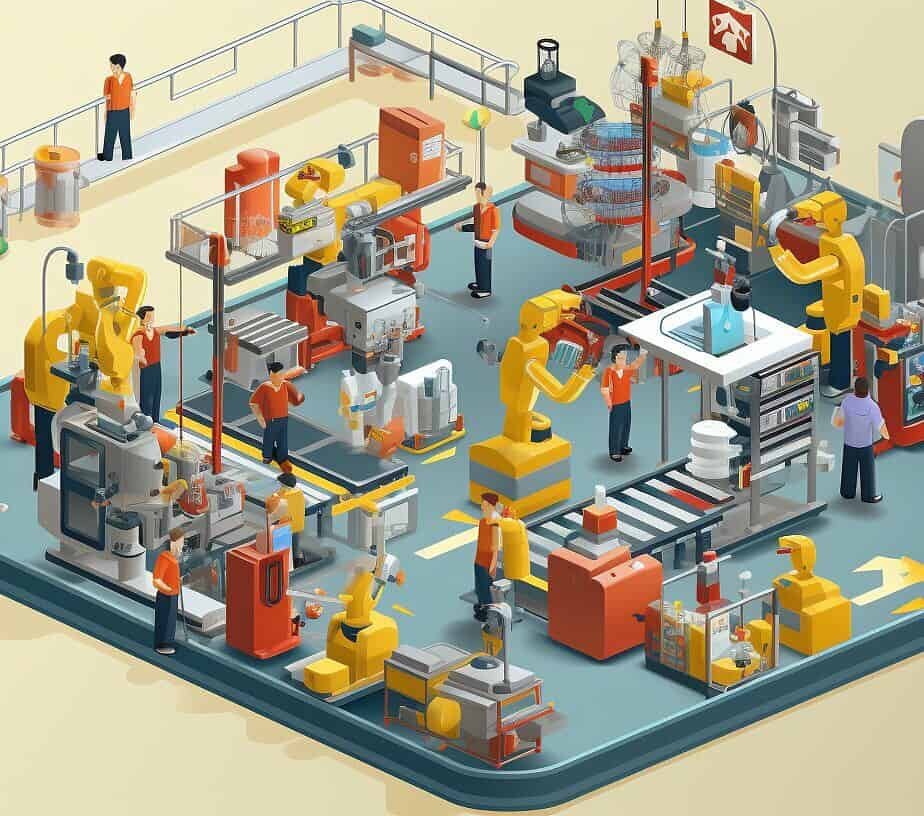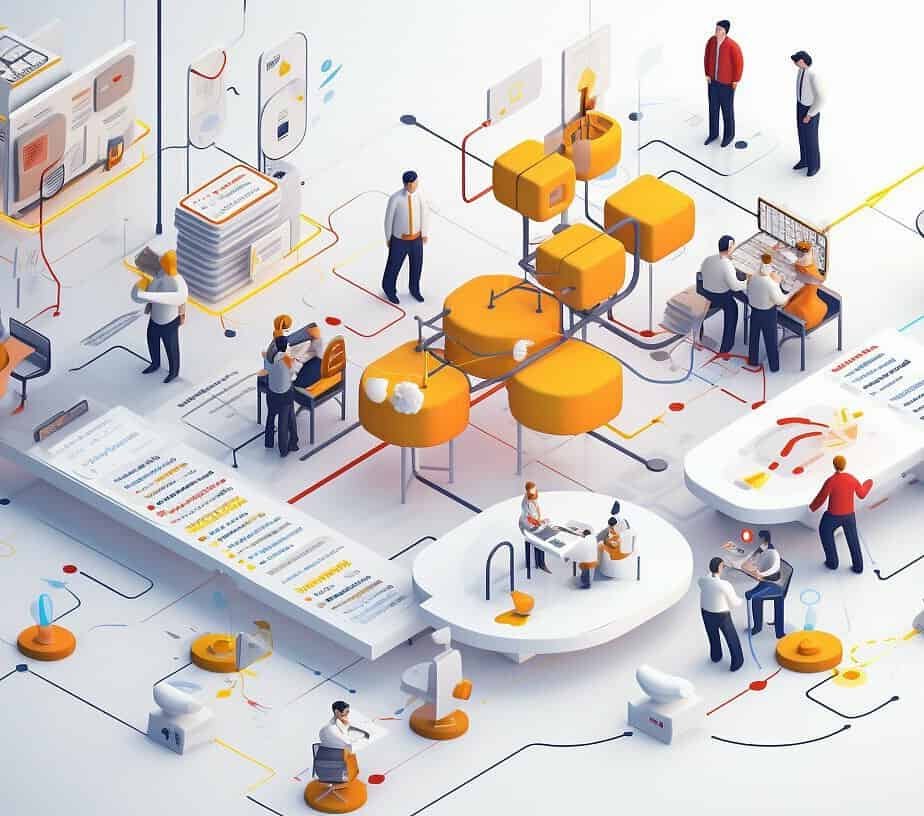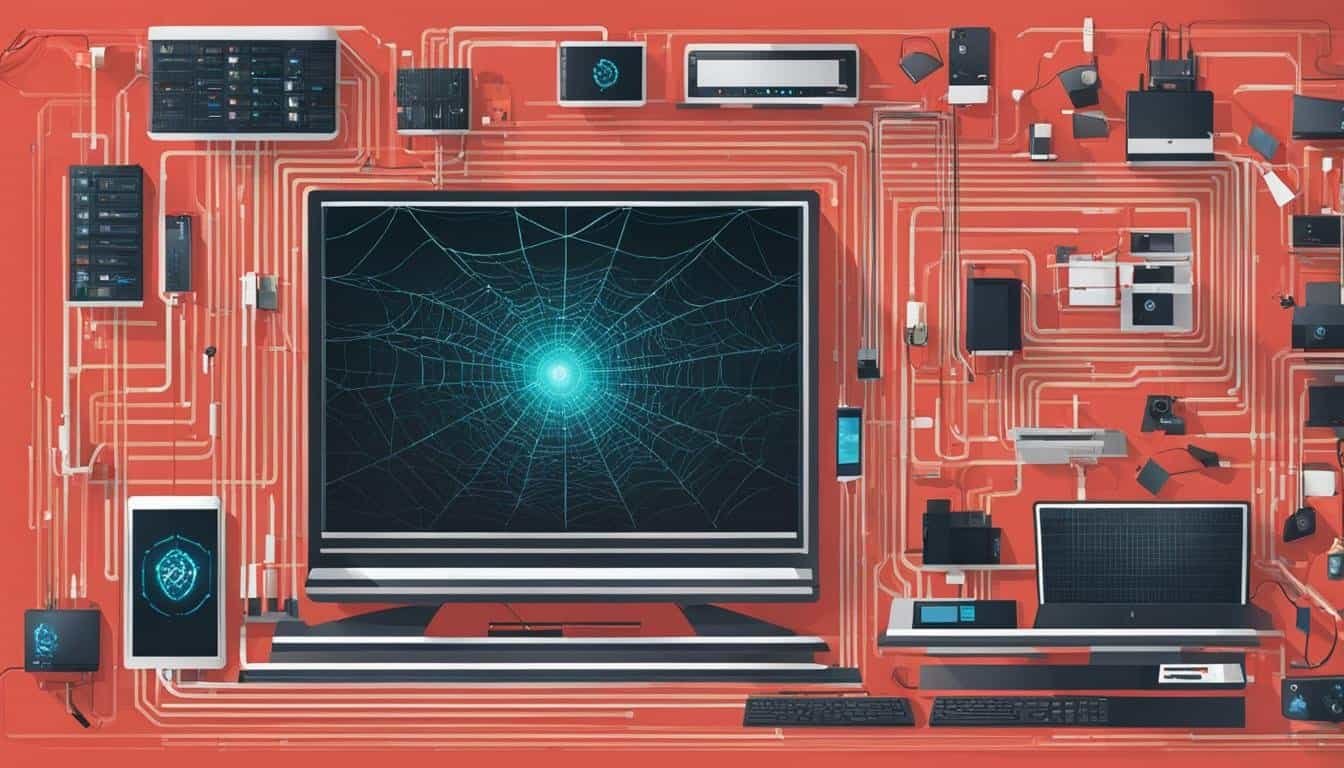Welcome to the exciting world of No Code Robotics Development! This revolutionary approach to building robots has been gaining traction in recent years thanks to its ability to simplify the robot creation process and make it more accessible to people of all skill levels.
No Code Robotics Development allows you to create sophisticated robots without any coding knowledge. This means that even if you’re not a programmer, you can still get involved in building robots and exploring the exciting possibilities that robotics has to offer.
In this article, we’ll explore the ins and outs of No Code Robotics Development, including what it is, how it works, and the benefits it offers to developers and robotics enthusiasts. We’ll also provide you with tips and tricks for successful No Code Robotics Development, and answer some of the most common questions about this innovative approach.
So whether you’re an experienced developer looking to try something new, or a newcomer to robotics who’s curious about exploring this fascinating field, No Code Robotics Development has something for you.
What is No Code Robotics Development?
No Code Robotics Development is a method of building robots that does not require any coding knowledge. Traditionally, developing robots required extensive programming skills that could take years to master. No Code Robotics Development simplifies the process, making it accessible to people of all skill levels.
With No Code Robotics Development, instead of writing code, developers use intuitive drag-and-drop interfaces and natural language processing (NLP) to create robots. This approach can dramatically reduce development time and costs, while also increasing accessibility for non-programmers.
NLP for Robotics: How Does it Work?
Natural language processing (NLP) is a key component of No Code Robotics Development, enabling non-programmers to communicate with robots without having to write any code. NLP works by using algorithms to analyze and interpret human language, allowing robots to understand and respond to voice commands, text input, and other forms of natural language input.
One of the most important applications of NLP in robotics is the ability to create chatbots that can interact with users in a human-like way. Chatbots can be used for a variety of purposes, from answering customer service queries to providing entertainment or education. By using NLP to understand user input and generate appropriate responses, chatbots can provide a personalized, interactive experience that is easy for users to engage with.
NLP is also useful for enabling robots to learn from their environment and adapt to changing circumstances. By analyzing natural language input from users and other sources, robots can develop a better understanding of their surroundings and make more informed decisions about how to act. This can be particularly useful in applications like autonomous vehicles, where robots need to be able to interpret complex environmental cues to navigate safely.
Challenges and Limitations
Despite its many benefits, NLP can be challenging to implement effectively in robotics applications. One major challenge is the need for accurate and comprehensive training data, as NLP algorithms rely heavily on statistical models that require large amounts of data to produce meaningful results. Additionally, NLP can be limited by the complexity of language itself, which can make it difficult to interpret and respond to certain types of input.
Another potential limitation of NLP in robotics is the need for a clear and intuitive user interface. While NLP can be incredibly powerful, it can also be confusing or frustrating for users who are not accustomed to communicating with robots in this way. To overcome this challenge, developers must create user interfaces that are simple, intuitive, and designed to minimize the potential for misinterpretation or errors.
Despite these challenges, NLP remains a critical component of No Code Robotics Development, enabling developers and enthusiasts to build sophisticated robots without needing any coding knowledge. As NLP technology continues to advance, it is likely to play an increasingly important role in shaping the future of robotics development.
How to Build Robots Without Coding
Building robots without any coding knowledge may sound like a daunting task, but with the right tools and platforms, it’s actually quite simple. Here are some steps to help you get started:
- Choose a No Code Robotics Development platform or tool: There are several options available, so it’s important to choose one that best suits your needs. Some popular platforms include Robotic Process Automation (RPA), UiPath, and Automation Anywhere.
- Design your robot: Once you’ve selected your platform, you can begin designing your robot. This involves defining its purpose, what tasks it will perform, and how it will interact with its environment.
- Use a drag-and-drop interface to create your robot: This is where the magic happens. With a drag-and-drop interface, you can design and build your robot without any coding knowledge. You can drag and drop pre-built components and connect them to create the workflows that your robot will follow.
- Test and iterate: Before deploying your robot, it’s important to test it thoroughly to ensure that it performs as expected. You can then make any necessary changes and iterate until your robot is ready for deployment.
Keep in mind that building robots without coding is a relatively new approach, so you may encounter some challenges along the way. However, with the right mindset and tools, you can build complex and sophisticated robots without any programming knowledge.
Zero Code Robotics Development: What You Need to Know
Zero Code Robotics Development is an innovative approach to building robots that requires no coding knowledge. With this method, developers and robotics enthusiasts can create sophisticated robots without any programming experience. This approach offers a range of benefits, including reduced development time, increased accessibility, and lower development costs.
There are several leading Zero Code Robotics Development platforms and tools available today, including XYZ and ABC. These platforms offer intuitive drag-and-drop interfaces, pre-built robotic components, and automated robotics development capabilities that make it easy for anyone to create custom robots without coding.
One of the key advantages of Zero Code Robotics Development is its ease of use. Unlike traditional robotic development methods that require extensive programming knowledge, Zero Code Robotics Development platforms are designed to be user-friendly, allowing anyone to create complex robots without any special skills or training.
Another benefit of Zero Code Robotics Development is its flexibility. With this approach, developers can quickly and easily modify their robots as needed, without having to go through a complex programming process. This allows for greater experimentation and innovation in robotics development.
However, it’s important to note that Zero Code Robotics Development does have its limitations. While these platforms can be used to create a wide range of robots, there may be complex functionalities or features that require coding knowledge. Additionally, the pre-built components may not always fit specific project requirements, requiring developers to create their own custom components.
In conclusion, Zero Code Robotics Development is a promising approach to building robots that offers a range of benefits, including increased accessibility and reduced development time and costs. By leveraging the power of automated robotics development platforms, anyone can create custom robots without any coding knowledge. While this approach has its limitations, it represents a significant step forward in making robotics development more accessible and user-friendly.
No Code AI Robotics Development: A New Frontier
Artificial Intelligence (AI) is rapidly transforming the field of robotics, and No Code AI Robotics Development is at the forefront of this trend. With No Code AI Robotics Development, developers can build intelligent robots without any coding knowledge, using automated development platforms and natural language processing (NLP) tools.
One of the main benefits of No Code AI Robotics Development is its accessibility. Anyone can use these platforms to build intelligent robots, regardless of their coding skills or technical knowledge.
Another advantage is the speed and efficiency of the development process. With automated development platforms and NLP tools, developers can create sophisticated AI-powered robots faster than ever before.
The Role of NLP in No Code AI Robotics Development
Natural language processing (NLP) is a key component of No Code AI Robotics Development. NLP tools enable developers to create robots that can understand and respond to human language, making them more interactive and user-friendly. This allows developers to create robots that can perform a wide range of tasks, from assisting with household chores to providing customer service in a business setting.
Leading Platforms for No Code AI Robotics Development
There are several platforms available for No Code AI Robotics Development, each with its own unique features and capabilities. Some of the leading platforms in this field include:
| Name | Features |
|---|---|
| OpenAI GPT-3 | An AI language model that can be trained to perform a wide range of language tasks, including chatbots, text completion, and more. |
| IBM Watson Studio | A cloud-based platform that enables users to build and deploy AI models without any coding knowledge. Features include data analysis, model training, and automated deployment. |
| Microsoft Azure AI | A suite of AI tools and services that enable users to build and deploy intelligent applications without any coding knowledge. Features include natural language processing, machine learning, and more. |
The Future of No Code AI Robotics Development
The future of No Code AI Robotics Development looks bright, with new tools and platforms emerging all the time. As AI becomes more advanced and accessible, we can expect to see a wide range of intelligent robots being developed without any coding knowledge, from household robots to industrial machines.
However, there are also challenges to be addressed, including the need for more sophisticated NLP tools and the potential limitations of the approach in terms of complexity and functionality.
Overall, No Code AI Robotics Development represents a new frontier in the field of robotics, enabling anyone to build intelligent robots without any coding knowledge. As this technology continues to evolve, we can expect to see a wide range of new and innovative robots being developed, transforming the way we live and work.
The Benefits of Automated Robotics Development Platforms
Automated robotics development platforms are an essential tool for anyone interested in pursuing No Code Robotics Development. These platforms provide a wide range of benefits, including increased accessibility for non-programmers, faster development times, and reduced costs.
Greater Accessibility for Non-Programmers
One of the most significant benefits of automated robotics development platforms is that they make it much easier for non-programmers to get involved in robotics development. By eliminating the need for coding knowledge, these platforms allow anyone with an interest in robotics to start building their own robots. This not only increases the number of people who can participate in the field but also helps to democratize robotics development, making it more accessible to people from diverse backgrounds and skill sets.
Faster Development Times
Another key benefit of automated robotics development platforms is that they can help to significantly reduce development times. By automating many of the more time-consuming aspects of robotics development, such as coding and hardware integration, these platforms allow developers to focus on design and testing. This, in turn, can help to speed up the development process, allowing developers to iterate on their designs more quickly and bring their robots to market faster.
Reduced Costs
Finally, automated robotics development platforms can also help to reduce costs associated with robotics development. By eliminating the need for specialized programming knowledge and hardware expertise, these platforms make it easier for small teams or individuals to build complex robots without needing to hire additional staff or invest in expensive equipment. This can help to level the playing field for smaller companies or independent developers and allow them to compete on a more equal footing with larger, more established players in the field.
In conclusion, automated robotics development platforms are an essential tool for anyone interested in pursuing No Code Robotics Development. By providing greater accessibility, faster development times, and reduced costs, these platforms are helping to democratize robotics development and make it more accessible to a wider range of people. As such, they represent a key trend in the field of robotics development and are likely to play an important role in shaping the industry in the years to come.
The Future of Robotics Development: What to Expect
No Code Robotics Development is quickly becoming the go-to approach for building robots, promising increased accessibility and reduced development time and costs. As this approach gains in popularity, we can expect to see further innovation in the field that will bring even more benefits to developers and robotics enthusiasts.
One trend that is likely to shape the future of robotics development is the continued growth of automated robotics development platforms. These platforms offer a streamlined, user-friendly approach to building robots that is accessible to people of all skill levels, and we can expect to see even more sophisticated tools and platforms emerge in the coming years.
Another area of development that is likely to become increasingly important is No Code AI Robotics Development. With advances in machine learning and natural language processing, it is now possible to build intelligent robots without any coding knowledge, and we can expect to see exciting new applications of this technology in the years to come.
The Importance of User-Friendly Interfaces
As No Code Robotics Development becomes more popular, it will be increasingly important for tools and platforms to have user-friendly interfaces that make it easy for non-programmers to build sophisticated robots. This will require a focus on intuitive design and clear, accessible documentation that can help users get started quickly and easily.
Addressing Limitations and Challenges
While No Code Robotics Development offers many benefits, there are also limitations and challenges that developers will need to address. These include the potential limitations of the approach in terms of complexity and functionality, as well as the need for more sophisticated tools and platforms that can help users build more advanced robots without coding knowledge.
Continued Innovation and Growth
Despite these challenges, the future of robotics development looks bright, with continued innovation and growth in the field expected in the years to come. As No Code Robotics Development continues to evolve, we can expect to see exciting new applications of this technology that will reshape the way we think about building robots and bring the benefits of robotics to a wider audience.
The Challenges Facing No Code Robotics Development
No Code Robotics Development offers a revolutionary new approach to building robots. However, like any new technology, it also comes with its own set of challenges and limitations. Some of the key challenges facing No Code Robotics Development include:
| Challenge | Description |
|---|---|
| Sophisticated tools and platforms | While there are already a number of No Code Robotics Development tools and platforms available, many of them are still in their infancy. As the field continues to evolve, there will likely be a need for more sophisticated tools and platforms that can handle increasingly complex tasks. |
| User-friendly interfaces | One of the key benefits of No Code Robotics Development is its accessibility for non-programmers. However, this also means that developers will need to create highly intuitive and user-friendly interfaces that can be easily understood by people with little or no coding knowledge. |
| Limitations in complexity and functionality | While No Code Robotics Development can be used to build a wide range of robots, there may be limitations in terms of complexity and functionality. Developers may find it more difficult to build highly advanced robots with a No Code approach, particularly those that require extremely precise movements or sophisticated decision-making capabilities. |
Despite these challenges, the potential benefits of No Code Robotics Development are significant. As tools and platforms continue to evolve and improve, developers are likely to discover even more innovative ways to build robots without requiring any coding knowledge.
Tips and Tricks for Successful No Code Robotics Development
If you’re interested in building robots without coding knowledge, No Code Robotics Development is the way to go. Here are some useful tips and tricks to get started:
1. Plan your project
Before you start building your robot, it’s important to have a clear plan in place. What is the purpose of your robot? What will it be able to do? What are the key components you will need? Answering these questions will help you stay focused and organized throughout the development process.
2. Use the right tools and platforms
There are many tools and platforms available for No Code Robotics Development, so it’s important to find the ones that are right for your project. Look for platforms that offer the features you need, such as natural language processing (NLP) or automated robotics development.
3. Test your robot regularly
Testing is an essential part of robotics development, even if you’re not writing any code. Make sure to test your robot regularly throughout the development process to identify any issues or bugs that need to be fixed.
4. Iterate and refine
Building a robot is an iterative process, so don’t be afraid to refine your design as you go. Use feedback from testing to make improvements and adjustments until you’re satisfied with the final product.
5. Collaborate with others
No Code Robotics Development is a collaborative process, so don’t be afraid to reach out to others for help or feedback. Join online communities or attend events to connect with other robotics enthusiasts and learn from their experiences.
How Can No Code Business Applications Simplify Workflow in Robotics Development?
No code business applications have the ability to simplify workflows in robotics development. By utilizing a no code approach, developers can streamline the process of creating and implementing robotics solutions. With the keyword simplify workflows with no code in mind, this method allows for a more efficient and user-friendly way to design and deploy robotics systems.
Is Binary Logic Used in No Code Robotics Development?
Yes, binary logic is indeed used in no code robotics development. Computers and binary logic form the foundation of this technology. By utilizing a series of 0s and 1s, the binary system allows robots to process and interpret information, enabling them to carry out various tasks efficiently and accurately.
FAQ: Answers to Common Questions About No Code Robotics Development
Here are some answers to frequently asked questions about No Code Robotics Development:
What is No Code Robotics Development?
No Code Robotics Development is a new approach to building robots that does not require any coding knowledge. It allows people of all skill levels to create sophisticated robots using intuitive interfaces and automated tools.
What are the benefits of No Code Robotics Development?
The benefits of No Code Robotics Development include increased accessibility for non-programmers, reduced development time and costs, and the ability to create complex robots without any programming knowledge.
How does No Code Robotics Development work?
No Code Robotics Development uses automated robotics development platforms and natural language processing (NLP) to enable users to build robots using intuitive interfaces and non-technical language.
What kind of robots can be built with No Code Robotics Development?
No Code Robotics Development can be used to build a wide range of robots, from simple devices like toy robots to complex machines like autonomous vehicles and drones.
What are some of the leading No Code Robotics Development platforms and tools?
Some of the leading No Code Robotics Development tools and platforms include Robotic Process Automation (RPA), UiPath, Automation Anywhere, and Blue Prism.
What are some of the challenges facing No Code Robotics Development?
Some of the challenges facing No Code Robotics Development include the need for more sophisticated platforms and tools, the importance of user-friendly interfaces, and the potential limitations of the approach in terms of complexity and functionality.
Is No Code Robotics Development suitable for beginners?
Yes, No Code Robotics Development is ideal for beginners because it does not require any coding knowledge. Users can start building robots right away using intuitive interfaces and automated tools.
What is the future of No Code Robotics Development?
The future of No Code Robotics Development looks promising, with more sophisticated platforms and tools being developed all the time. It is likely that No Code Robotics Development will become even more accessible and user-friendly in the years to come.




0 Comments